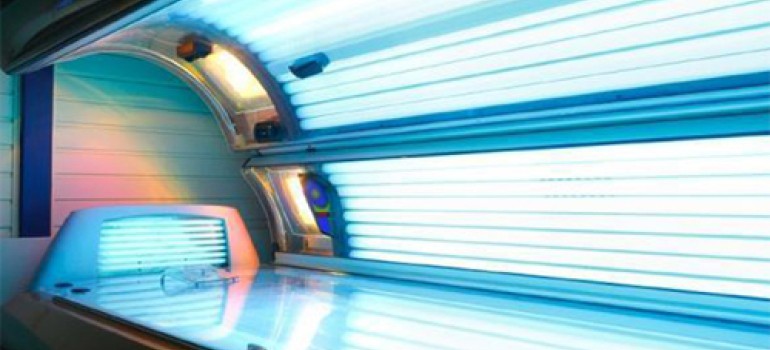
The ugly truth about indoor tanning
A tan is harmful to your health. Whether you get your golden glow from a tanning bed or the natural sun, tans are the result of exposure to harmful ultraviolet (UV) radiation which damages your health over time.
Cumulative damage caused by UV radiation, both from the sun and tanning beds, can lead to premature skin aging (wrinkles and brown spots) and skin cancer. Skin cancer is the most common form of cancer and it’s 90% preventable.
Nova Scotians have some of the highest rates of skin cancer in Canada. That’s why doctors are urging all Nova Scotians to avoid artificial tanning. Tanning beds increase your risk of malignant melanoma – the most serious form of skin cancer.
Melanoma is one of the most common forms of cancer for young adults between the ages of 15-29. It is also one of the most preventable.
Deadly Facts
The Canadian Cancer Society estimates that 6,800 Canadians will be diagnosed with melanoma in 2015 and 1,150 Canadians will die from it.
People who use tanning beds before age 35 have a 59% increase in the risk of developing melanoma.
What Is Melanoma?
Melanoma is the least common, but most serious, type of skin cancer.
Melanoma is a malignant tumour that starts in melanocytes. Melanocytes are a type of cell that make melanin, which is the pigment that gives your skin and eyes their colour. Malignant means that it can spread, or metastasize, to other parts of the body.
The skin is the body’s largest organ. It covers your whole body and protects it from injury, infection and ultraviolet (UV) light from the sun. The skin helps control your body temperature and gets rid of waste materials through the sweat glands. It also makes vitamin D and stores water and fat.
Although a family history of melanoma and other skin cancers can increase a person’s risk of developing skin cancer, it’s often developed over time as a result of accumulated environmental factors like UV radiation. Excessive exposure to UV from the sun and sun beds plays a leading role in the development of melanoma and is the most preventable cause of this disease.
In fact, experts estimate that about 90% of melanomas are associated with severe UV exposure and sunburns over a lifetime.
Enjoy the Sun, Avoid the Harm
With summer in full swing, here are some tips to help you enjoy the sun while protecting yourself from its harmful effects:
- Don’t lie down for cancer
Don’t use tanning beds. Period. - Use sunscreen daily
Use a sunscreen with an SPF of 30 or higher. Use water resistant, sweat resistant or sport sunscreen if you’re involved in activities in water or will perspire. Reapply sunscreen after swimming, toweling or heavy perspiration. Apply sunscreen to all parts of the body that are not covered by clothing every 2 hours. - Reduce sun exposure
Reduce your sun exposure between 11 a.m. and 4 p.m. when the UV index is moderate to high. Check the UV index before heading outside and protect yourself appropriately. The higher the number, the stronger the sun’s rays will be and the more important it is to protect yourself. - Cover up
Wearing tight-knit, loose-fitting clothes, a wide-brimmed hat and UV protective sunglasses will help keep you cool, comfortable and protect you from the dangers of sun exposure. - What’s your skin telling you?
Learn the early signs and how to check your own skin, check yourself once a month and consult your doctor if you notice any suspicious spots. Make sure that you or someone you know checks hard-to-get-to places such as your back, back of your neck, ears and backs of legs.
#TanningIsOut

The simple truth is that tanning is not healthy.
The best ways to protect yourself from melanoma and other skin cancers is to limit your exposure to UV rays and avoid tanning beds.
The Canadian Cancer Society – Nova Scotia Division have launched a new website and campaign called Tanning Is Out, to help change the way Nova Scotians think about tanning. Check out their website for more information about skin cancer, the dangers of tanning and to meet their character “Tanner” and watch funny videos from his travels around Halifax last summer. The Society will be spreading the message at a number of events in Halifax this summer – click here for locations.
Spread the word – share this article with your friends and family! Tweet this article using the hashtag #TanningIsOut
